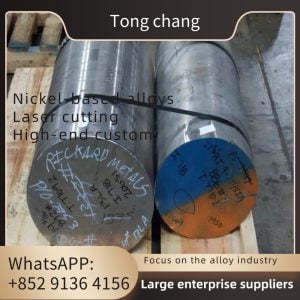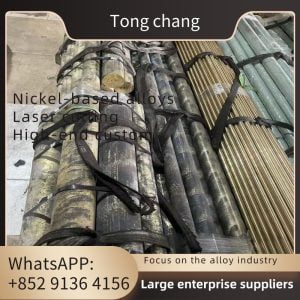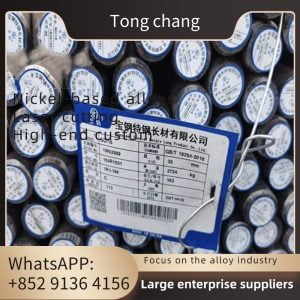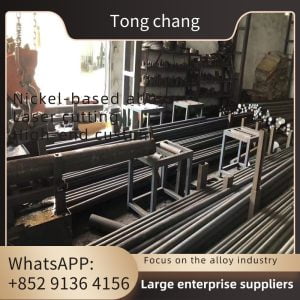| Standard: | ASTM A213/ASME SA213 | Material: | T9 |
|---|---|---|---|
| Type Of Tube: | U-bend Seamless Tube | Application: | Heat Exchanger, Bolier |
| Delivery Condition: | Normalize & Temper | Length: | Custom Size |
| Packing: | Plywood Case/Iron Case | Mill Test Certificate: | EN10204 3.1/EN10204 3.2 |
ASTM A213/ASME SA213 T9 ALLOY STEEL SEAMLESS U BEND HEAT EXCHANGER TUBE
Overview:
T9 seamless U bend tubes predominantly consist of iron (Fe) as the base metal, with the addition of chromium (Cr), molybdenum (Mo), and other elements such as carbon (C), manganese (Mn), and silicon (Si). The specific composition will vary depending on the alloy specifications and manufacturing standards.
T9 seamless U bend tubes exhibit excellent heat resistance, allowing them to withstand high temperatures without deformation or loss of strength. This makes them suitable for applications in industries such as power generation, petrochemicals, and refineries, where high-temperature environments are present.
T9 alloy steel has good creep strength, meaning it can withstand the gradual deformation that occurs under constant applied stress at elevated temperatures. This property makes T9 seamless U bend tubes suitable for applications requiring long-term reliability and resistance to thermal stress, such as heat exchangers and boilers.
Specification:
| Standard | ASTM A213 & Its equivalent ASME, DIN & EN Standard |
| Grades | T9 |
| Type | U-ben seamless tube |
| Outer Diameter | 1/4'' to 1'' or custom size |
| Wall Thickness | BWG25;BWG22;BWG20;BWG18;BWG16;BWG14;BWG12;BWG10 |
| Length | custom cut lengths |
| Delivery Condition | Normalize & Temper |
| Ends | Plain End, Beveled End |
| Other Testing | Product Analysis, Eddy Current Test, Hydrostatic Test, Ultrasonic Test, Flattening Test, Hardness Test, Tensile Test etc. |
| Dimension | All Pipe & Tube Is Manufactured and Inspected / Tested to the Relevant standards including ASTM and ASME |
| Packing | Plywood case/Woven bag in bundle |
Chemical Composition:
| Grade | UNS | C | Mn | P | S | Si | Cr | Mo |
| T9 | K90941 | 0.15 max | 0.30-0.60 | 0.025 max | 0.025 max | 0.25-1.00 | 8.0-10.0 | 0.90-1.10 |
Mechanical Properties:
| Grade | UNS | Tensile Strength, min, ksi (MPa) | Yield Strength, min, ksi (MPa) | Elongation in 2 in. or 50mm, min (%) | Hardness | |
| Rockwell | Brinell/Vickers | |||||
| T9 | K90941 | 60(415) | 30(205) | 30 | 89HRB | 179HBW/190HV |
Applications:
1. Heat Exchangers: T9 seamless U bend tubes are widely used in heat exchangers for various industries, including power generation, petrochemical, and chemical processing. These tubes facilitate the efficient transfer of heat between hot and cold fluids, making them ideal for applications such as shell-and-tube heat exchangers, condensers, and economizers.
2. Boilers and Superheaters: T9 seamless U bend tubes find application in boilers and superheaters. They are used to generate and superheat steam in power plants and industrial processes that require high-pressure and high-temperature operations. The T9 alloy steel construction provides excellent durability and resistance to creep deformation.
3. Refining and Petrochemical Processes: T9 seamless U bend tubes are employed in the refining and petrochemical industries for applications such as cracking furnaces, reformers, and high-temperature piping systems. These tubes can withstand the corrosive environments and high temperatures associated with these processes, ensuring reliable performance and longevity.
4. Thermal Solar Power Plants: T9 seamless U bend tubes are utilized in thermal solar power plants for the collection and transfer of solar energy. They are incorporated into the receiver tubes of parabolic trough solar collectors, where they absorb solar radiation and transfer it to a working fluid for power generation or other thermal applications.
5. High-Temperature Piping Systems: T9 seamless U bend tubes are suitable for high-temperature piping systems found in various industries, including oil and gas, chemical, and power generation. They can be used for applications such as steam distribution, superheated steam lines, and hot oil circulation systems, where resistance to elevated temperatures and thermal stress is crucial.








